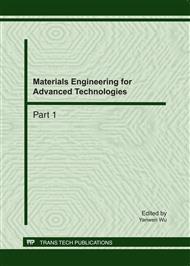p.437
p.443
p.448
p.453
p.459
p.466
p.472
p.478
p.484
Computational and Experimental Study of Temperature Distribution and Residual Stress in Butt-Joint TIG Welds
Abstract:
This work conducted a non-linear finite element model associated with arc efficiency to simulate the temperature distribution and residual stress. A three-dimensional finite element analysis of temperature and stress in butt-joint TIG welds was performed using commercial software ANSYS. This model includes adjusting Gaussian distribution heat flux, alternating temperature dependent material properties, and managing thermal elasto-plastic material behavior. Computational results for both the temperature distribution and the residual stress are compared with available experimental data to confirm the accuracy of this technique. The simulated results of temperature distribution and residual stress are in good agreement with corresponding experimental data. The greatest value of this work does not lie in its ability to predict the magnitude and distribution of weld temperature and residual stress. Rather, this work proposed that prediction errors in a finite element model can be eliminated by modifying the arc power distribution function.
Info:
Periodical:
Pages:
459-465
Citation:
Online since:
June 2011
Authors:
Keywords:
Price:
Сopyright:
© 2011 Trans Tech Publications Ltd. All Rights Reserved
Share:
Citation:


